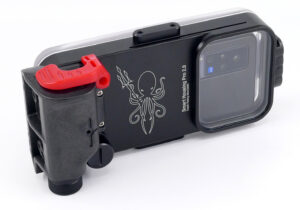A Comprehensive Guide to Taking Stunning Underwater Photos with Your Mobile Phone
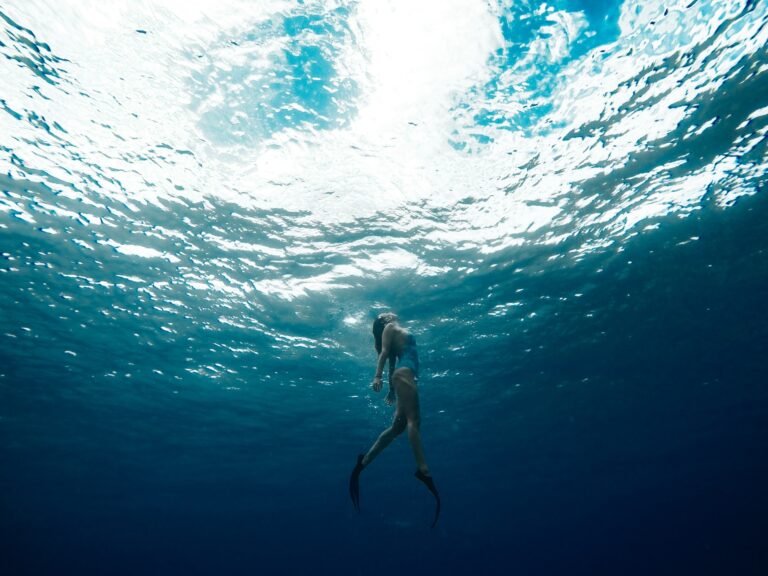
Capturing the breathtaking beauty of the underwater world through your mobile phone is an incredible experience. Whether you’re snorkelling in tropical waters or exploring the depths on a scuba diving adventure, underwater photography opens up a world of mesmerizing sights and marine wonders. In this in-depth guide, we will delve into the best techniques, essential tips, and advanced strategies to help you master the art of underwater photography using your mobile phone with the help of a few accessories.
Section 1: Gear and Preparation
Invest in the Right Gear:
Before embarking on your underwater photography journey, it’s vital to ensure your mobile phone is well-protected. Invest in a reliable waterproof phone case or housing specifically designed for your model. For this guide, we’ve chosen three different manufacturers that cater to a wide range of different phones thanks to their design. These are the DIVEVOLK SeaTouch 4 Max, SeaLife SportDiver and Kraken Universal Smartphone Housing KRH07 V2 Pro.
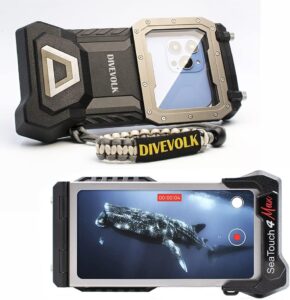
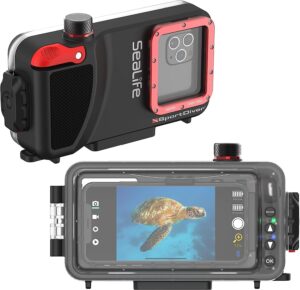
We picked these models as they represent some of the best products out there, with one of these starting for as little as $199 (SeaTouch). These three offer all the necessary features designed to maximise the final results of your underwater photographic adventures. Additionally, these also come with a range of accessories, among which one already comes provided with a red filter (SportDiver), a very helpful addition considering the challenge of balancing white light underwater. These protective enclosures will safeguard your device from water damage and also come with built-in safeguards and alarms that alert you to the integrity of the case itself (KRH 07). Additionally, you can consider attaching a floating wrist strap to avoid accidental drops and keep your phone safe in the water.
Choose the Perfect Location:
Selecting the right location is crucial for successful underwater photography. Look for places with clear waters, abundant marine life, and captivating underwater landscapes. Tropical destinations, coral reefs, and marine sanctuaries often provide ideal conditions for capturing stunning images.
Learn about the Marine Environment:
Understanding the marine environment you’ll be diving into is essential for great underwater photography. Familiarise yourself with the local marine life, their behaviour, and the best times to encounter them. This knowledge will help you anticipate photo opportunities and approach marine creatures with respect and caution.
Section 2: Techniques for Underwater Photography
Master the Basics of Composition:
Composition plays a pivotal role in underwater photography. The rule of thirds, leading lines, and balanced framing can greatly enhance the visual impact of your photos. Use natural elements such as coral or rock formations to frame your subjects creatively.
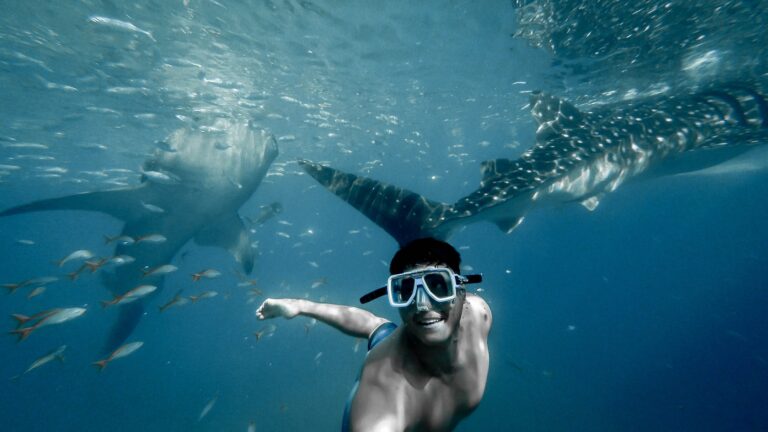
Optimise Your Phone Settings:
Before diving into the water, take a moment to adjust your phone’s camera settings. Switch to the highest resolution available (or if you’re shooting video, 4K at the highest framerate) to ensure the best-resulting image quality. Beginners are fortunate in this department, thanks to the unique design of one of the above-mentioned cases, the SeaTouch, as you’re able to access your phone’s screen through their patented interactive case design. If you find yourself in a jam, you can even make an emergency phone call! Experiment with different shooting modes, like HDR or Pro mode, to see which works best in the underwater environment. If your phone allows manual adjustments, tweak the white balance and exposure settings to adapt to the unique lighting conditions underwater, which often require additional light, especially if the conditions are rougher on the day of the dive/shoot.
Mind the Lighting:
Light behaves differently underwater, affecting the colours and contrasts in your images. To make the most of the available light, position yourself and your subject accordingly. Shooting upward toward the surface can create stunning silhouettes and light rays. However, avoid shooting directly against the sun to prevent overexposure.
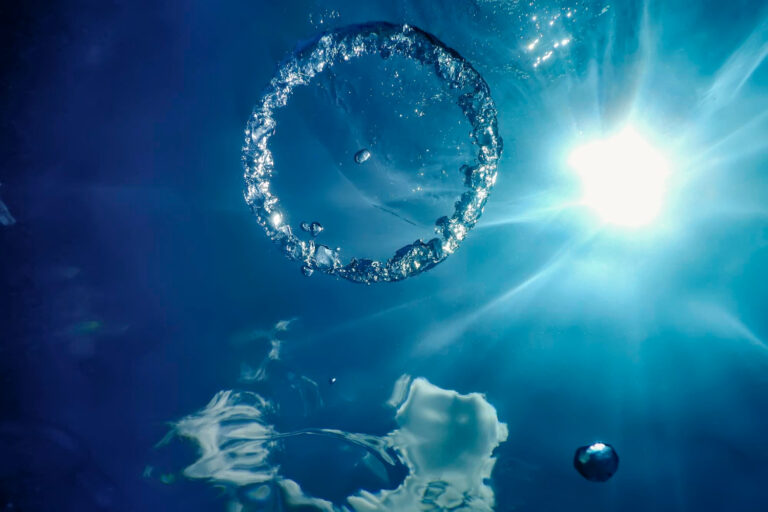
Utilise Natural Light:
While artificial lighting is an option for advanced photographers, it’s best to start with natural light for those that are just starting out. As you gain experience, you can explore and experiment with your photography using underwater strobes or LED lights to fill in shadows and add more vibrancy to your subjects. For natural light shots, aim to shoot during the golden hours of sunrise and sunset for that particularly soft, warm illumination.
Get Up Close and Personal:
Water reduces image clarity due to its density, so getting as close as possible to your subject is essential for clear and captivating shots. Exercise caution and respect towards marine life while approaching, and avoid touching or disturbing fragile creatures or corals. Corals, in particular, have experienced negative effects on their ecosystems due to the rise in seawater temperatures.
Section 3: Techniques for Underwater Subjects
Photographing Marine Life:
One of the most rewarding aspects of underwater photography is capturing marine life in its natural habitat. Patience is key when photographing fish, turtles, or any other marine creatures. Observe their behaviour and movements to anticipate their actions and capture those most candid moments.
Capture Vibrant Coral Reefs:
Coral reefs are teeming with life and colours, making them perfect subjects for underwater photography. To showcase the vibrant hues, use a colour-correction filter designed for underwater use. While the SportDiver may already come with its own red filter, you can get a similar extension for the SeaTouch, which slightly boosts its low starting price, but we think it’s worth the investment. This type of filter will help restore colours lost due to water absorption, resulting in stunning and true-to-life reef images.
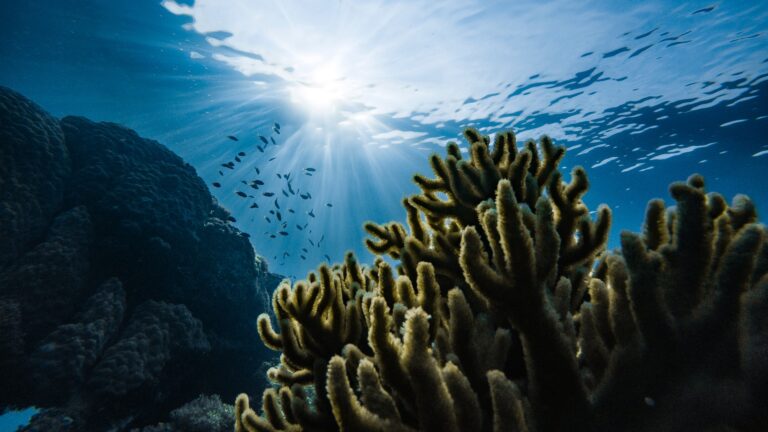
Creating Stunning Silhouettes:
Silhouette shots can add drama and mystique to your underwater photographs. To achieve this effect, shoot against the light source, such as the sun or a diver’s flashlight, and position your subject in front of the bright background.
Section 4: Advanced Techniques and Tips
Embrace Burst Mode:
Photographing moving subjects, such as fish or playful dolphins, can be challenging. In these situations, utilise your phone’s burst mode to increase your chances of capturing the perfect shot. Burst mode captures multiple images in rapid succession, ensuring you don’t miss those fleeting moments, which are even harder to capture when dealing with the often quick-moving marine creatures.
Maintain Stability:
Underwater currents, at the best of times, can make it difficult to keep your phone steady while taking photos. To maintain stability, hold your phone with both hands, keep your elbows close to your body, and use slow, steady movements before taking the shot. Alternatively, consider using a tripod designed for underwater use for maximum stability. The mobile phone-sized underwater tripod is a compact and versatile tool. Its basic construction includes lightweight and buoyant materials (usually along with optional weights, that can be added or removed), allowing it to be easily handled in the water without affecting buoyancy.
Post-Processing Magic:
Once you’ve surfaced, take your underwater photos to the next level through post-processing. There are a number of apps and desktop software offering features to enhance colours, remove unwanted elements, and bring out the best in your underwater images. However, remember to maintain the authenticity of your photos and avoid excessive editing that distorts the natural technicolour beauty of the underwater world.

With the right gear, techniques, and understanding of the marine environment, capturing stunning underwater photos with your mobile phone is an achievable and rewarding endeavour. As with the nature we encounter around us on land, it is crucial to extend the same respect to marine life, by following ethical photography practices and immersing yourself in the enchanting underwater world to create awe-inspiring images that will be cherished for years to come.
Note: This guide is aimed at providing an in-depth resource for aspiring underwater photographers. Always adhere to ethical and sustainable practices while photographing marine life and respect the fragile underwater ecosystems you choose to explore. Happy snapping!

